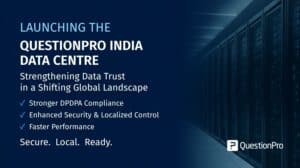
360 review questions are essential components of modern performance management systems. Unlike old-fashioned top-down evaluations, 360 reviews collect feedback from various sources, like peers, subordinates, supervisors, and clients or customers.
This inclusive approach offers a comprehensive understanding of an individual’s strengths and areas needing improvement. However, creating practical 360 review questions is key to gathering actionable insights and nurturing professional growth.
In this blog, we’ll explore best practices, tips, and more for setting impactful 360 review questions.
What is 360 Review?
A 360 review, or multi-rater feedback, gathers feedback from employees involved in an employee’s work environment. These employees may include supervisors, peers, direct reports, and external employees.
Unlike traditional performance reviews conducted solely by managers, 360 reviews offer a more comprehensive and well-rounded assessment.
Importance of 360 Review Questions
The importance of 360 review questions must be considered when it comes to conducting thorough and effective performance evaluations. Here’s a deeper look into why these questions are so crucial:
Comprehensive Insight
360 review questions are designed to cover various dimensions of an individual’s performance. From technical skills to interpersonal skills and dynamics, these questions provide a holistic view, ensuring that no aspect goes unnoticed.
This comprehensive insight enables a well-rounded evaluation, offering valuable feedback across the employee’s strengths and roles.
Enhanced Self-awareness
One of the most significant benefits of 360 review questions is their role in enhancing self-awareness. Employees gain insights into their strengths and areas needing improvement by receiving feedback from multiple sources – including peers, subordinates, and managers.
This deeper understanding allows individuals to identify blind spots, leverage their strengths, and work on areas of development, ultimately fostering personal and professional growth.
Objective Evaluation
Unlike traditional performance reviews conducted solely by supervisors, 360 reviews incorporate feedback from various employees.
This multi-rater approach reduces the influence of biases inherent in single-source assessments, leading to a more objective evaluation. By gathering perspectives from different angles, organizations can ensure a fair and balanced assessment of an employee’s performance.
Strengthened Relationships
Involving colleagues in the feedback process through 360 review questions goes beyond performance evaluation and follows stronger organizational relationships. Employees feel valued and respected by implementing input from peers and subordinates, leading to greater trust and collaboration.
The transparency promoted by 360 reviews encourages open communication, laying the foundation for healthier interpersonal dynamics and a positive work environment.
Best Practices for Crafting Good 360 Review Questions
Crafting practical 360 review questions is a nuanced process that requires attention to detail and strategic planning. Here are some best practices to guide you in developing questions that yield valuable insights and foster employee growth:
1. Focus on Core Competencies
Tailor questions to assess skills and behaviors that are essential for job performance and align with organizational objectives. Identify key competencies such as communication, problem-solving, leadership, teamwork, and adaptability.
Focusing on these core areas ensures that the feedback gathered directly relates to the employee’s role and responsibilities.
2. Use Open-Ended Questions
Encourage detailed and qualitative feedback by framing questions in an open-ended format. Instead of asking yes or no questions, prompt respondents to provide insights in their own words.
For example, instead of asking, “Is the employee a good team player?” you could ask, “Can you provide examples of how the employee has demonstrated effective teamwork?”
3. Include a Rating Scale
Incorporate a balanced rating scale to quantify feedback and gauge agreement or disagreement with statements about the employee’s performance.
A commonly used scale ranges from strongly disagree to strongly agree, providing a spectrum for respondents to express their opinions. This helps standardize feedback and makes it easier to analyze and interpret.
4. Ensure Anonymity
Assure respondents that their feedback will remain confidential to promote honesty and unbiased responses. Anonymity is crucial for creating a safe environment where employees feel comfortable providing candid feedback without fear of repercussion.
This fosters trust in the review process and ensures that the feedback gathered is genuine and insightful.
5. Balance Positive and Constructive Feedback
Strike a balance between highlighting strengths and addressing areas for improvement to provide a well-rounded assessment. While it’s important to celebrate successes and acknowledge achievements, it’s equally important to identify areas where the employee can grow and develop.
By offering a mix of positive and constructive feedback, you provide a more holistic view of the employee’s performance and enable them to take meaningful steps towards improvement.
Tips To Write A Good 360 Review Question
Creating practical 360 review questions goes beyond just asking generic inquiries. Here are some additional tips to ensure your questions are well-structured and yield valuable insights:
Be Specific
Avoid ambiguity by arranging questions that are clear, concise, and specific. Vague language can lead to misunderstandings and inconsistent responses. Instead, focus on articulating precise criteria or scenarios that respondents can easily interpret and evaluate.
For example, instead of asking, “How are the employee’s communication skills?” you could ask, “Can you provide examples of times when the employee effectively communicated complex ideas to the team?”
Keep it Relevant
Ensure your questions directly relate to the employee’s role and responsibilities. Arrange questions to address specific competencies, tasks, or behaviors relevant to their job function. This makes the feedback more actionable and ensures the evaluation aligns with organizational goals and objectives.
Promote Development
Frame questions in a way that encourages personal growth and professional development. Instead of focusing solely on past performance, include questions that prompt respondents to provide helpful feedback on areas where the employee can improve or develop new skills.
This fosters a culture of continuous learning and empowers employees to take ownership of their development journey.
Rotate Questions
Periodically update and rotate your 360 review questions to prevent response bias and adapt to changing organizational needs. By introducing fresh questions or revising existing ones, you keep the evaluation process dynamic and relevant.
This also prevents respondents from becoming complacent or providing rote responses, ensuring that the feedback remains meaningful and actionable over time.
Seek Feedback
Feel free to collect employees’ input to refine and improve the effectiveness of your 360 review questions. Gather feedback from employees, managers, HR professionals, and other relevant parties to identify areas for improvement and ensure that the questions adequately capture the nuances of performance evaluation.
Incorporating diverse perspectives can lead to more comprehensive and insightful questions that better serve the organization’s needs.
Examples of 360 Review Questions
Implementing comprehensive 360 review questions fosters employee engagement by soliciting diverse feedback and promoting a culture of continuous improvement. Here’s an extensive list of 360 review questions covering various aspects of an individual’s performance, behavior, and skills:
Leadership
- How effectively does this individual provide direction and guidance to their team?
- Does this person lead by example and inspire others to achieve their best?
- How well does this individual foster a culture of collaboration and innovation within the team?
- Is this person receptive to feedback and willing to adapt their leadership style accordingly?
Communication
- How does this employee communicate ideas and instructions to others?
- Does this individual actively listen to others and encourage open communication?
- How well does this person tailor their communication style to different audiences?
- Is this person approachable and receptive to feedback from colleagues?
Teamwork
- How effectively does this individual employee collaborate with team members’ opinions to achieve common goals?
- Does this person contribute positively to team dynamics and support their colleagues?
- How well does this individual resolve conflicts or disagreements within the team?
- Is this person willing to share knowledge and resources with others?
Problem-solving
- How well does this person identify and analyze problems to find viable solutions?
- Does this individual demonstrate creativity and resourcefulness in solving complex issues?
- How effectively does this person navigate challenges and obstacles?
- Is this person open to seeking input from others when faced with difficult decisions?
Adaptability
- How well does this individual respond to changes in the work environment or priorities?
- Does this person remain calm and composed in stressful situations?
- Is this person flexible and willing to adjust their approach when necessary?
- How effectively does this individual manage ambiguity and uncertainty?
Initiative and Proactivity
- Does this person take the initiative to identify opportunities for improvement or growth?
- How proactive is this individual in taking on additional responsibilities or tackling new challenges?
- Does this person demonstrate a willingness to go above and beyond their job duties?
- Is this person self-motivated and driven to achieve results?
Professionalism
- Does this individual demonstrate integrity and ethical behavior in their actions?
- How well does this person adhere to company values, policies, and standards?
- Is this person reliable in meeting deadlines and commitments?
- Does this individual maintain a positive and professional attitude even in challenging situations?
Development and Learning
- Is this person committed to continuous learning and professional development?
- How effectively does this individual seek feedback and incorporate it into their growth?
- Does this person actively pursue opportunities to expand their problem-solving skills and knowledge?
- Is this person willing to mentor or support the personal development of others?
Customer Focus (if applicable)
- How well does this individual understand and prioritize the needs of customers or clients?
- Does this person strive to deliver exceptional service and exceed customer expectations?
- How effectively does this individual handle customer complaints or difficult situations?
- Is this person responsive to customer feedback and suggestions for improvement?
360 Review Questions With QuestionPro Workforce
QuestionPro Workforce offers a comprehensive solution to optimize this process through its 360 Review Questions feature.
1. Tailored Questionnaires
QuestionPro Workforce enables organizations to craft tailored 360-degree feedback questionnaires suited to their unique requirements.
Whether focusing on leadership competencies, behavioral traits, or specific organizational goals, our platform empowers users to design questions that accurately evaluate employee performance and leadership effectiveness.
2. Holistic Feedback Collection
Gathering feedback from multiple perspectives is key to providing a holistic view of leadership performance. With QuestionPro Workforce, administrators can effortlessly collect insights from peers, subordinates, supervisors, and other employees, facilitating a comprehensive evaluation process.
3. Confidentiality and Anonymity
Ensuring confidentiality and anonymity is crucial for fostering honest and constructive feedback. Our platform prioritizes respondent privacy, employing advanced security measures and anonymity protocols to instill trust and encourage candid responses.
4. Actionable Insights
Beyond merely collecting feedback, QuestionPro Workforce equips organizations with actionable insights derived from 360 review data. Through intuitive dashboards and analytics tools, leaders gain valuable insights into their strengths, areas for improvement, and actionable steps for growth.
5. Personalized Development Plans
With detailed feedback from 360 reviews, leaders can collaborate with coaches or mentors to devise personalized development plans. QuestionPro Workforce facilitates this process by providing tools to set goals, track progress, and measure the impact of developmental efforts over time.
6. Continuous Improvement
Driving continuous improvement is at the core of effective leadership development. With QuestionPro Workforce, organizations can establish a feedback loop wherein leaders regularly revisit their 360 review results, adjust strategies, and monitor progress toward enhancing their leadership capabilities.
Conclusion
Mastering the art of evaluating employee performance review requires thoughtful planning and execution, particularly when implementing 360 review questions.
By understanding the significance of well-crafted questions, following best practices, and leveraging technology to streamline the process, organizations can unlock the full potential of 360 reviews to enhance individual and organizational performance.
QuestionPro Workforce offers a comprehensive suite of tools and features to streamline the 360 review process and elevate leadership development initiatives. By leveraging our platform, organizations can empower their leaders to excel, cultivate a culture of continuous learning, and drive sustainable business success.
With QuestionPro as your partner, you can confidently embark on this journey with the tools and insights needed to elevate your performance evaluation process to new heights. So, take the initiative to develop effective 360 review questions and unlock the full potential of your workforce.







